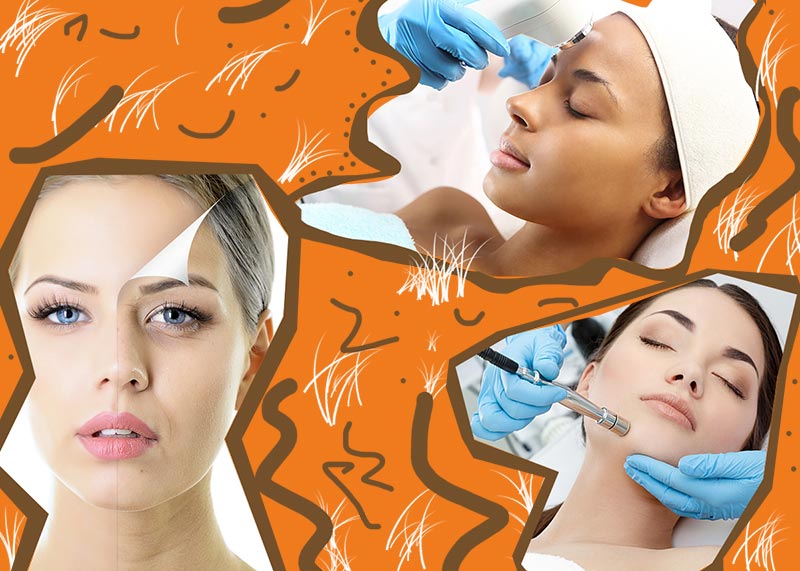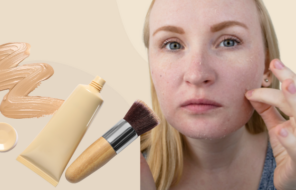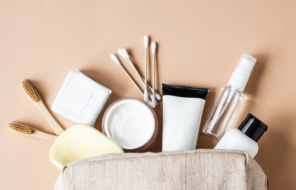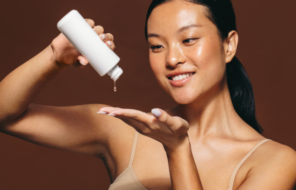Do you ever feel like you are just covered in a layer of … blah? Like you just want to scrub away all the bad, and be left with something fresh and new underneath? As far as facial skin is concerned, a microdermabrasion is basically that. Microdermabrasion is one of the more aggressive salon treatments: it is a physical resurfacing of the skin that reveals the fresh and young skin below.
Microdermabrasions are excellent skin treatments, but they are certainly not for everyone. In this article, you will learn everything you need to know before considering getting a microdermabrasion done.
In this article:
- What Is Microdermabrasion?
- What Is Microdermabrasion Good for?
- What Is the Difference Between Microdermabrasion and Dermabrasion?
- Who Should Avoid the Microdermabrasion Treatment?
- What Does a Microdermabrasion Feel Like?
- What Else Can I Expect from a Microdermabrasion?
- Are There Any Side Effects to Microdermabrasion?
- How Long Does a Microdermabrasion Take?
- How Much Does a Microdermabrasion Cost?
- How Does One Prepare for a Microdermabrasion?
- How Effective Is Microdermabrasion?
- How Can I Help My Microdermabrasion Along?
- How to Choose the Perfect Salon or Spa for Your Microdermabrasion?
What Is Microdermabrasion?
A microdermabrasion is an in-salon beauty treatment that exfoliates the skin extremely thoroughly. Unlike most facials, the exfoliation is not done with a scrub or a peel, but is instead performed with a microdermabrasion wand, attached to a machine.
There is a small hole in the wand, with two hoses attached to it. Through one hose, tiny aluminium oxide crystals are propelled onto the skin, where they are able to dislodge dead skin. Through the other hole, the dead skin along with some of the crystals is soaked back up into the machine.
The aesthetician performing the service uses small, controlled movements to gently pass the microdermabrasion wand all over the face, removing the top layer of dead skin from the stratum corneum.
What Is Microdermabrasion Good for?
Microdermabrasion is a fairly gentle treatment. One round of this procedure will not result in drastic improvement. However, after a series of microdermabrasions, combined with an effective at-home skincare routine, microdermabrasion can be very effective for the following:
- Smoothing and softening uneven skin texture
- Brightening dull skin
- Lightening shallow acne scars
- Fading hyperpigmentation and sun spots
- Smoothing fine lines and wrinkles
- Clearing clogged pores and blackheads
What Is the Difference Between Microdermabrasion and Dermabrasion?
Unlike microdermabrasion, a dermabrasion is a medical procedure that has to be performed by a doctor. A dermabrasion is done with an instrument with a brush or a wheel, that moves at a very fast speed. It is considerably more aggressive than a microdermabrasion, because it moves much more than just the top layer of dead skin on the epidermis.
Unlike with a microdermabrasion, dermabrasion is a painful procedure that requires a lot of downtime after being performed. Dermabrasion, by causing injury to the skin, forces new skin to grow – skin that is meant to look better, cosmetically. There are more side effects to the dermabrasion procedure.
Who Should Avoid the Microdermabrasion Treatment?
While microdermabrasion is fairly gentle, there are some people who should avoid getting it done.
- Pregnant women
- Anyone taking blood thinning medication or accutane (i.e. isotretinoin)
- People suffering from active acne (i.e. weeping blemishes or pimples on the surface of the skin)
- People with rosacea, eczema, dermatitis, psoriasis, or fragile capillaries
- Those suffering from autoimmune disorders, diabetes or lupus
What Does a Microdermabrasion Feel Like?
Let’s address the most important concern right away: a microdermabrasion performed correctly DOES NOT HURT. If it does hurt, it is a sign that your skin is too sensitive for it, or that your aesthetician is overly aggressive. Either way, pain is a sign that the micro needs to stop.
What does it actually feel like, then? The best comparison I can think of is, it’s like having an especially dry-tongued cat licking your face thoroughly. It’s a little rough thing making its way over your face.
The microdermabrasion wand passes over the skin in small, upward strokes, specifically going against the direction of hair growth. The aesthetician will pull the skin below the wand taut, to avoid having the suction of the machine pull on the skin. Instead, the suction of the machine stimulates the skin and improves circulation. Some people find the experience pleasant and relaxing, while others might find it mildly irritating.
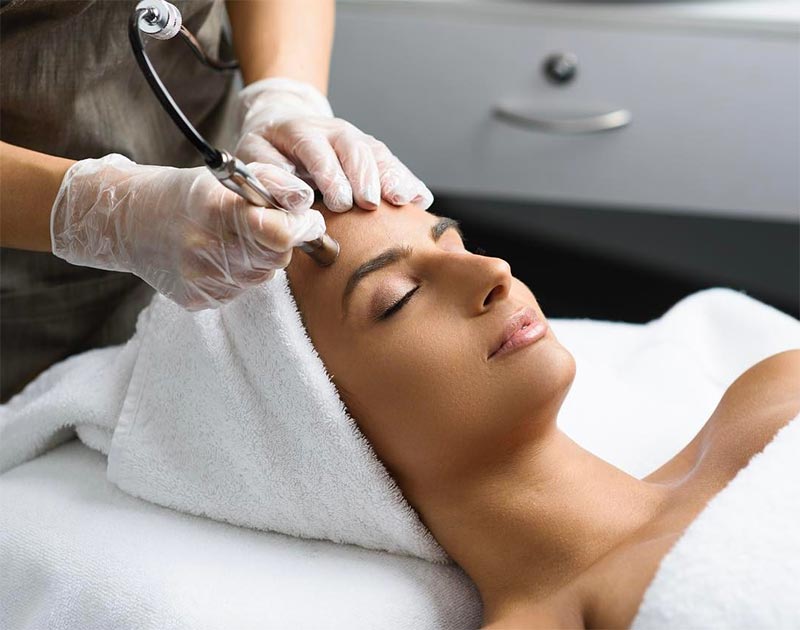
What Else Can I Expect from a Microdermabrasion?
At a good salon, the microdermabrasion will be incorporated into a longer facial, and you should actually be able to leave happy, relaxed, and rejuvenated.
Your skin will be cleansed and wiped down with a prepping liquid. Your eyes will be covered, so as to ensure crystals don’t accidentally get into them. Then, the microdermabrasion will begin.
Depending on your skin type, condition, and concerns, the aesthetician might only pass over your face once with the wand, or they may make multiple passes. Once that is finished, the micro crystals left on your skin will be wiped away, and a soothing toner will be applied to your skin.
Now that all of the dead skin has been removed, it is the best time for your skin to take in additional nutrition – this means it is a great time for a nourishing face mask. If your aesthetician doesn’t apply a face mask at this point, they should at the very least apply serums, face moisturizers, and, of course, finish you off with a sunscreen, since your skin is now much more sensitive to sun exposure.
Are There Any Side Effects to Microdermabrasion?
In the medical sense of the word, there are very few side effects, and they are very easy to deal with. Your skin might become momentarily red, raw, and itchy after the procedure; if it does, it won’t stay like that for longer than 24 hours. Your skin will definitely become more sensitive to sun exposure, so wearing a sunscreen with an SPF over 30 is very important.
How Long Does a Microdermabrasion Take?
Microdermabrasions have been called “lunchtime facials”, because they can be done during one’s lunch hour. The microdermabrasion itself shouldn’t take longer than 30 minutes, although it can also be incorporated into a longer facial, which could take between 1 to 2 hours.
How Much Does a Microdermabrasion Cost?
The prices can vary widely, based on how upscale the salon that you choose is, or whether you choose to have it done at a medical center. Between $75-$200 is a reasonable price to pay. On the higher end of the scale, you should expect a full facial, whereas the lower end of the scale would include just a 30-45 minute treatment.
How Does One Prepare for a Microdermabrasion?
Microdermabrasion does not require much preparation. You should avoid using any peeling skincare products for a few days before the treatment. This means no glycolic or lactic acid (a.k.a. AHA), no salicylic acid (a.k.a. BHA), and no retinol-based products. It is better to come to your appointment not wearing any makeup, but sometimes that’s unavoidable so the aesthetician should be able to remove it all for you.
How Effective Is Microdermabrasion?
So while I’ve mentioned what microdermabrasion is good for, it is important to know that a single microdermabrasion will not fix most skin concerns. A single microdermabrasion is simply a gentle yet thorough skin resurfacing. If you feel like your skin is looking dull and rough, a simple microdermabrasion will certainly be more than enough to fix that.
However, for other concerns like pigmentation and clogged pores, a single microdermabrasion will not be enough, and it may not even be the best treatment. Microdermabrasion works by physically exfoliating the skin from above, much more thoroughly than using a scrub at home. However, it only removes the top layers of dead skin, while pores are usually clogged at a deeper level than that, while hyperpigmentation and scarring often being at a lower level as well.
For these sorts of skin concerns, microdermabrasions have to be performed regularly (even 2-3 weeks), and it is only after a few treatments that one would start seeing results. Many salons will sell series of 5 or 10 microdermabrasions at a lower cost.
Fine lines are a whole different matter entirely. The aging process is very complex, and trying to slow it down or reverse it requires regular exfoliation, cosmetics rich in antioxidants, and regular sunscreen use. While regular microdermabrasions can slow down the process, they would have to be done regularly every few weeks to once a month, and the results will never fully eliminate fine lines and wrinkles.
How Can I Help My Microdermabrasion Along?
To get the biggest bang for the buck from your microdermabrasion treatment, help it along at home with chemical exfoliation. If you are dealing with hyperpigmentation, light acne scars, and thick or textured skin, using a serum with 8%-10% AHA at home will help speed up the rate, which your dead skin cells are shed, and helping your microdermabrasion along from below. A vitamin C serum will also help along with hyperpigmentation.
If your concern is clogged pores, a BHA will work similarly to AHA, but it will exfoliate inside the pore, and help eliminate blackheads better.
Lastly, if your concern is related to signs of aging, pairing your microdermabrasions with at-home use of an over the counter retinol product will help immeasurably, as well, by helping speed up cell regeneration.
A Few More Questions to Ask Yourself
Before choosing to have a microdermabrasion done, first consider what you expect out of it, and how much money you are willing to spend. Is it possible that there is a different salon treatment or at-home treatment that would work better?
Are you ready to follow the aftercare instructions – especially wearing sunscreen? Are you ready to do everything needed to maximize the benefits of the microdermabrasion? Once you’ve thought about things thoroughly, find that perfect salon, and enjoy a really fascinating skin care treatment!
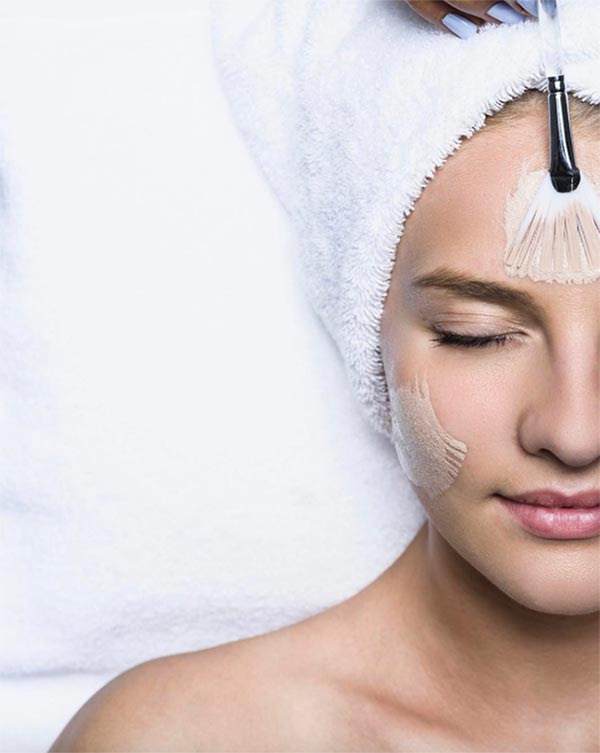
How to Choose the Perfect Salon or Spa for Your Microdermabrasion?
A skilled and well-educated aesthetician can do an excellent job on your microdermabrasion, regardless of whether he or she works at a medical center, a spa, or a salon. Choose a location in your area that has many positive reviews for all of their facial treatments, and their microdermabrasions in particular. Look at pictures of the salon, and maybe even drop in to see it in person.
Make sure the place looks clean and tidy. If, in the reviews, a specific aesthetician is referenced often, you can ask for them by name when you make your appointment.
Consider booking a consultation beforehand, so you can have an opportunity to chat with the person who will be performing your microdermabrasion. Ask them about their hygiene standards – during the facial they should wear gloves, there should be a disposable attachment on the microdermabrasion wand, and everything they use on your face should be disposable as well.
They should also be able to clearly explain to you what the microdermabrasion will include, and how it will benefit your skin. If, after the consultation, you feel well-informed and that you had good rapport with the aesthetician, you can feel comfortable springing for the full treatment!
Have you had a microdermabrasion done? Are you thinking about it? Let me know about your thoughts and experiences in the comments!
Photos via Instagram

